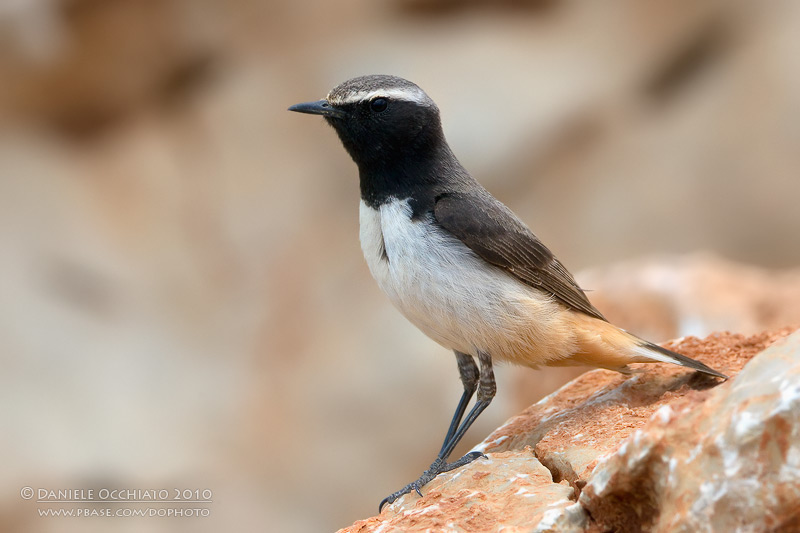Kurdish wheatear: Red Data Book of Armenia

Thrushes, robins, chats and wheatears - Turdidae
Status. A vulnerable species of low numbers. Listed in the IUCN Red List of Threatened Species (ver. 3.1) as Least Concern. According to IUCN criteria categorized as Endangered EN B1a+2a; D.
Distribution. The main part of the population is concentrated in the South Caucasus, Northern Iran, Southern Tajikistan, Eastern Afghanistan and Western Pakistan.
Distribution in Armenia. Armenia is the northernmost part of the range of this species where it occurs on the Urts Ridge and in the Meghri district.
Habitats. Lives in semi–deserts, on stony slopes.
Biological traits. Nestles in narrow crevices. Four to six eggs are laid twice a year. Feeds on insects, mostly ants, beetles and larvae.
Population size and its trends. Available information is insufficient to judge about the population size. In the Meghri district, the population density is 0.23 individuals/ha.
Major threats. The population has been affected by the use of habitats and, possibly, by the application of toxic chemicals to combat vermin.
Conservation measures. Protected in Arevik National Park. Considering the limited distribution area and the imminence of threats related to human use, it is essential to reconsider the land use policies in semi–deserts and to proceed with the establishment of sanctuaries. It is also important to strengthen control over the use of toxic chemicals in agriculture.
Suggestions
 The Ministry of Environment sent a letter international partners to draw their attention to the real danger of environmental disasters as a result of Azerbaijan's large-scale aggression towards the territory of Armenia
The Ministry of Environment sent a letter international partners to draw their attention to the real danger of environmental disasters as a result of Azerbaijan's large-scale aggression towards the territory of Armenia
 Vicia pisiformis: Red Data Book of Armenia
Vicia pisiformis: Red Data Book of Armenia
 Vavilovia formosa: Red Data Book of Armenia
Vavilovia formosa: Red Data Book of Armenia
 Trigonella capitata: Red Data Book of Armenia
Trigonella capitata: Red Data Book of Armenia
 Trigonella astroides: Red Data Book of Armenia
Trigonella astroides: Red Data Book of Armenia












